Abstract
Parameters of humoral and cellular immunity were investigated in patients with chronic cadmium (Cd) disease and compared to values in an age matched control group. In the patient group, there was a slight reduction in WBC although T and B lymphocyte ratios were normal. RBC counts were significantly reduced (P less than 0.05). No significant differences in serum immunoglobulin (Ig) concentrations were found. Blood Cd was significantly raised (P less than 0.001) and urine Cd was elevated. In lymphocyte transformation tests, responses to Staphylococcus aureus, PHA and PPD were not impaired and no evidence of Cd hypersensitivity was found. Responses in PHA and ADCC cytotoxicity tests were normal and nitro-blue tetrazolium (NBT) reduction was only slightly decreased in the patient group. beta 2-Microglobulin (beta 2M) was significantly raised in serum (P less than 0.001) and urine (P less than 0.001) of patients. Patient 3 day lymphocyte cultures produced significantly more beta 2M than cultures from the control group (P less than 0.01). beta 2M was increased in lymphocyte cultures, from patient and control groups, containing PHA (P less than 0.01), low Cd concentrations (P less than 0.01) or PPD. The results indicate that chronic Cd disease is not associated with significant alterations in immunological parameters in vitro. The high beta 2M levels associated with this disease may not result entirely from kidney damage but may in part be due to an increase in the release of beta 2M from cells, induced by Cd.
Full text
PDF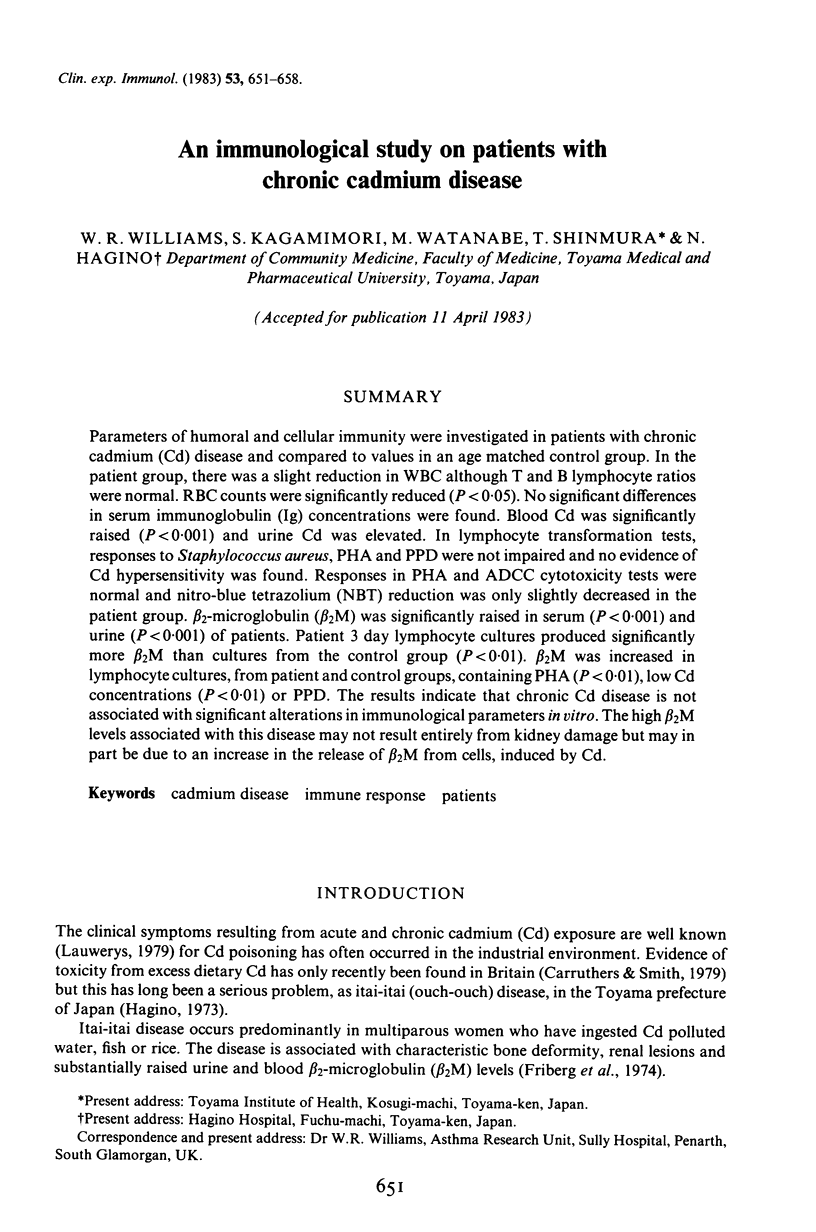
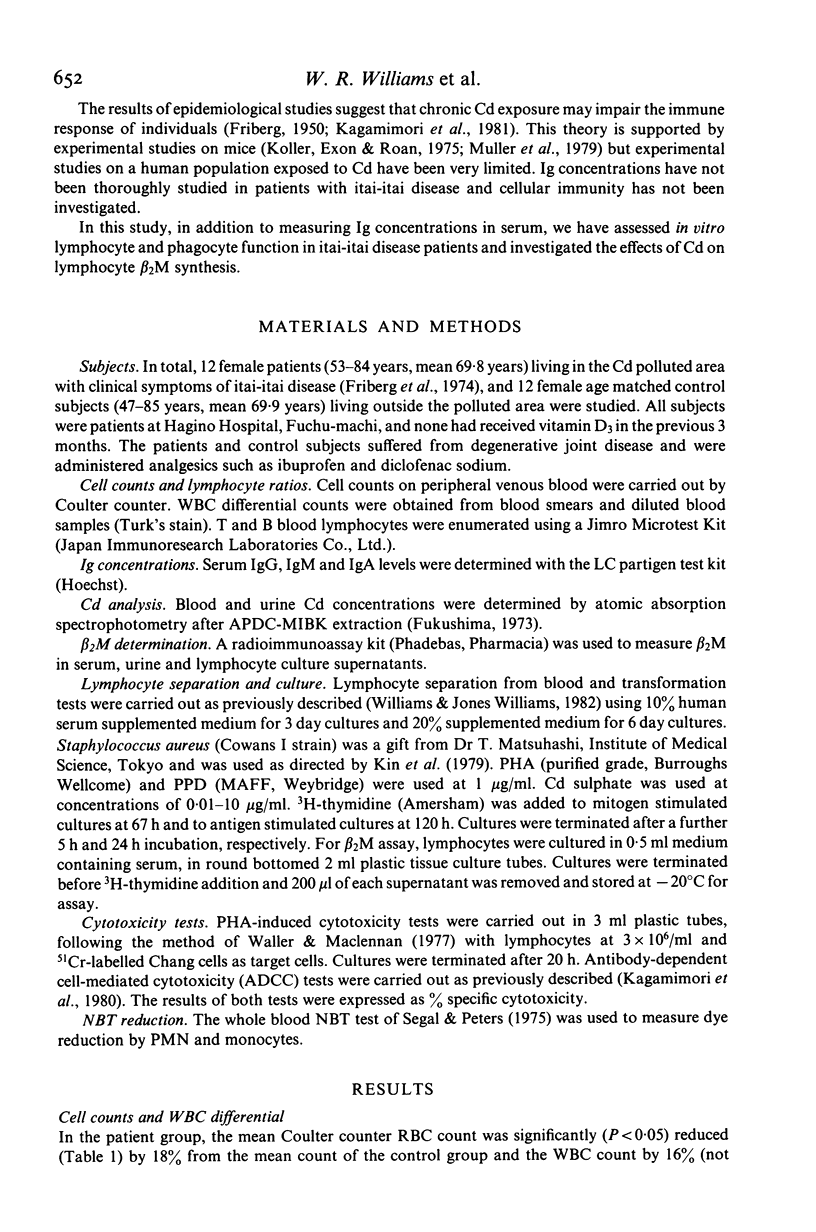
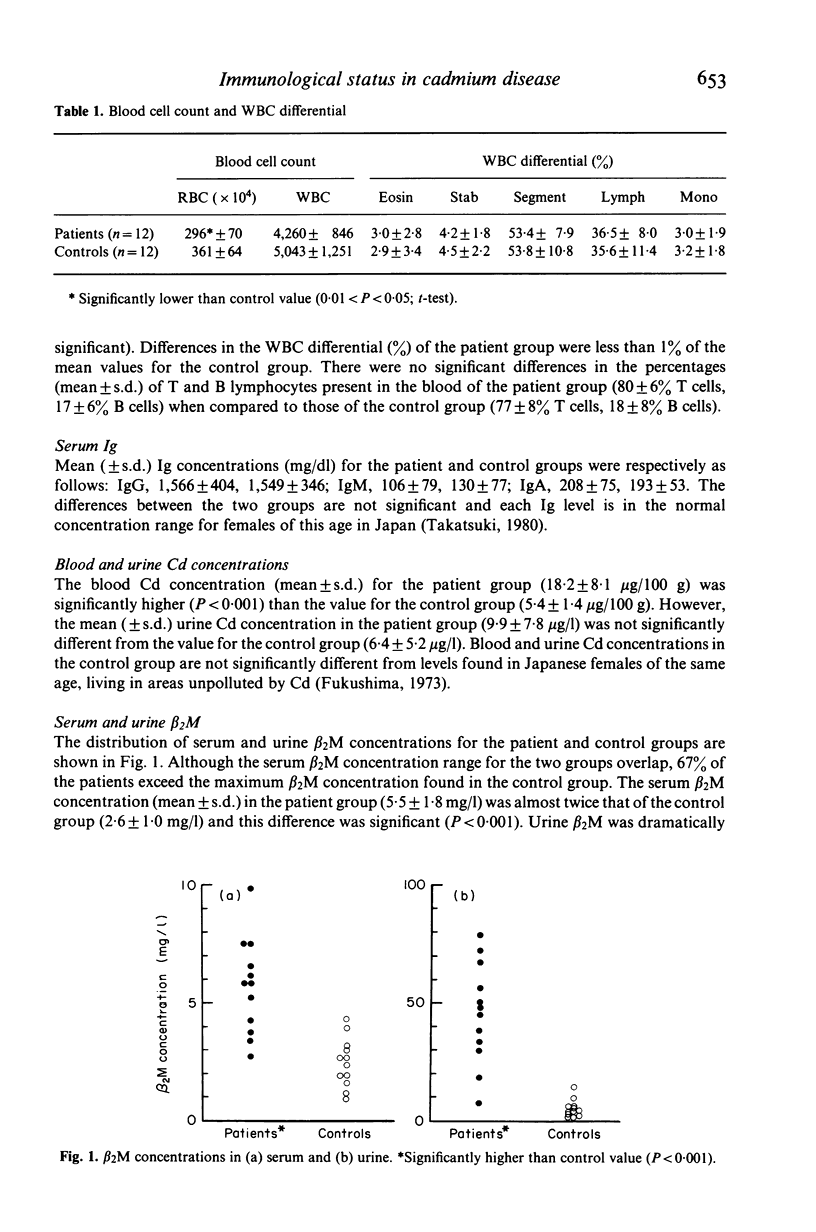
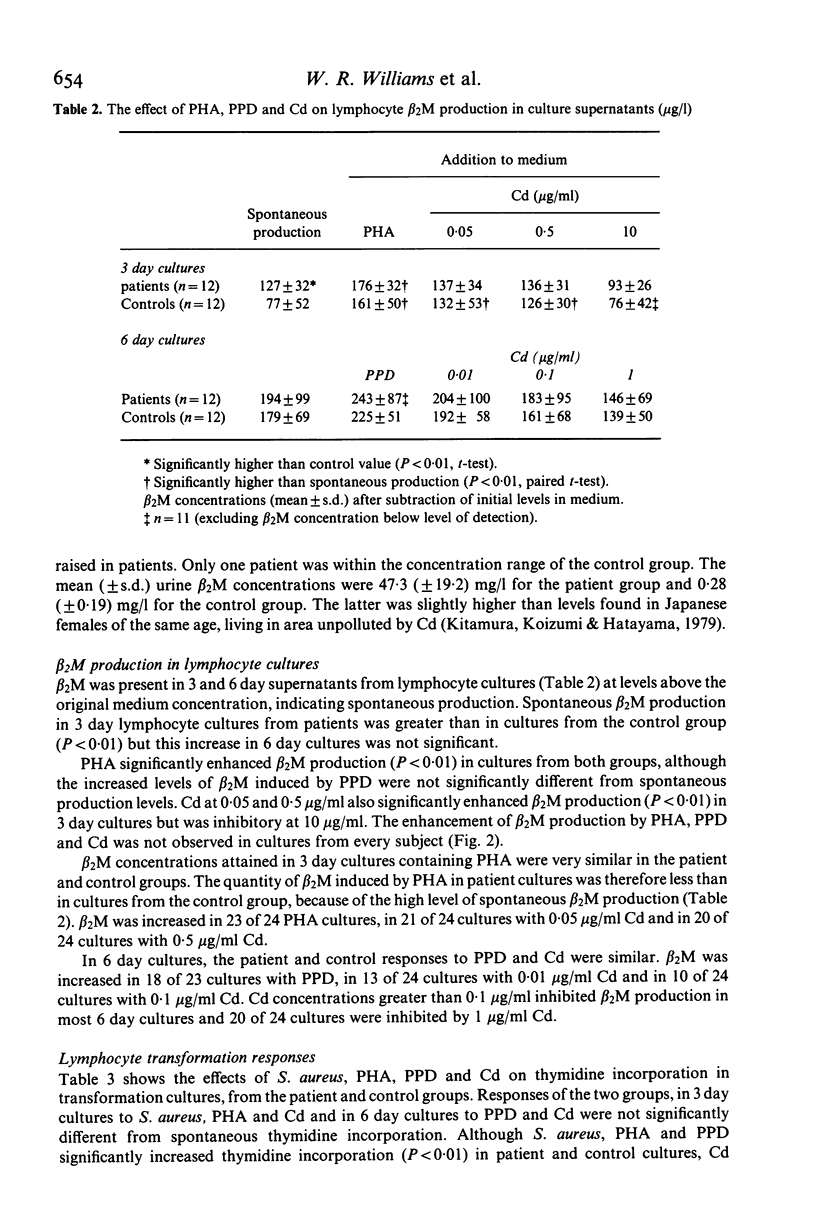
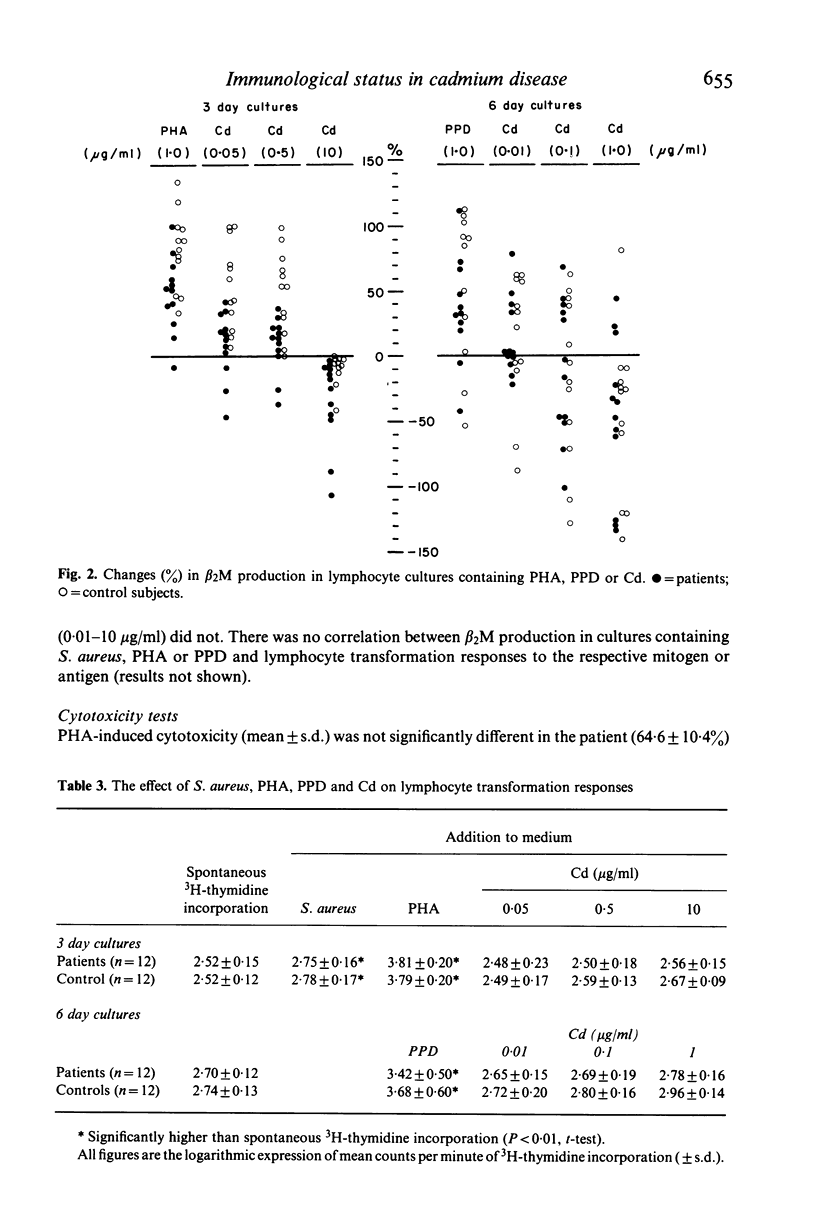


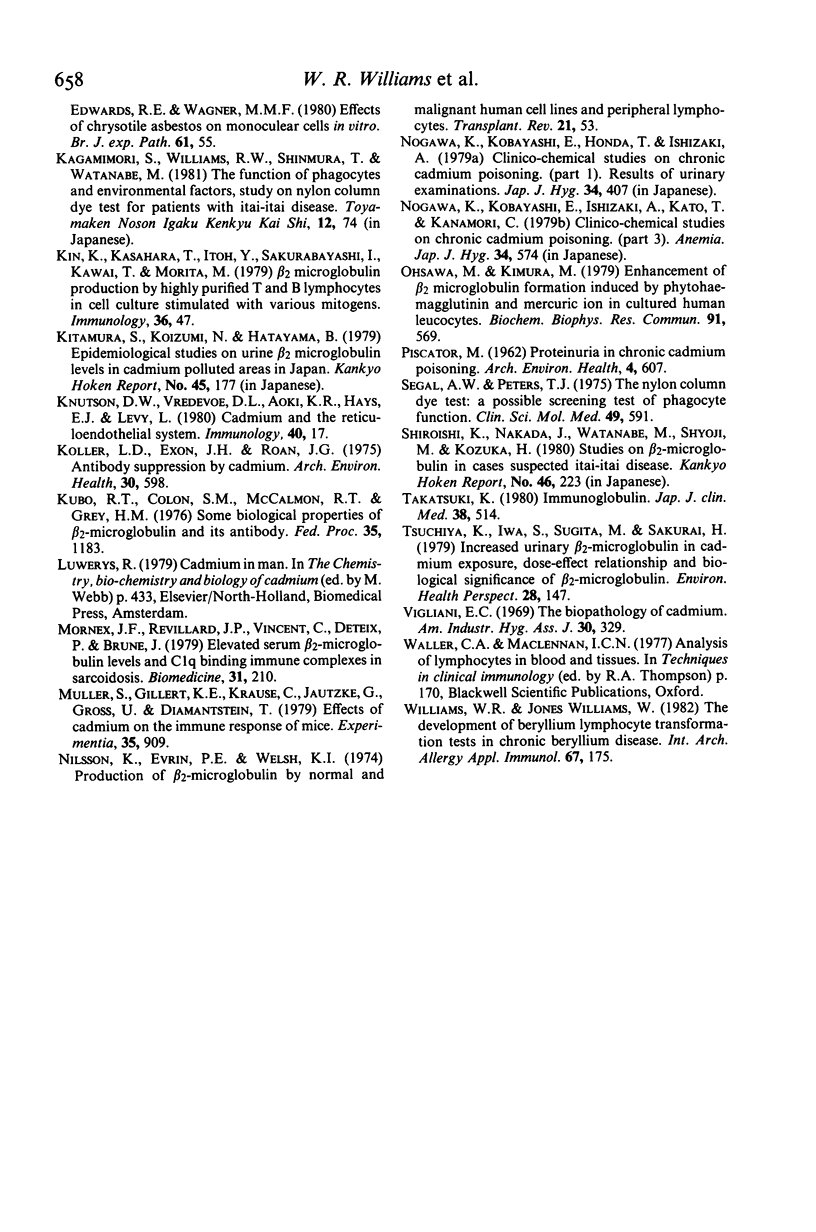
Selected References
These references are in PubMed. This may not be the complete list of references from this article.
- Carruthers M., Smith B. Evidence of cadmium toxicity in a population living in a zinc-mining area. Pilot survey of Shipham residents. Lancet. 1979 Apr 21;1(8121):845–847. doi: 10.1016/s0140-6736(79)91263-7. [DOI] [PubMed] [Google Scholar]
- Fukushima M. [Cadmium--interpretation of the test results]. Nihon Rinsho. 1973;31:1496–1503. [PubMed] [Google Scholar]
- Kagamimori S., Scott M. P., Brown D. G., Edwards R. E., Wagner M. M. Effects of chrysotile asbestos on mononuclear cells in vitro. Br J Exp Pathol. 1980 Feb;61(1):55–60. [PMC free article] [PubMed] [Google Scholar]
- Knutson D. W., Vredevoe D. L., Aoki K. R., Hays E. J., Levy L. Cadmium and the reticuloendothelial system (RES). A specific defect in blood clearance of soluble aggregates of IgG by the liver in mice given cadmium. Immunology. 1980 May;40(1):17–26. [PMC free article] [PubMed] [Google Scholar]
- Koller L. D., Exon J. H., Roan J. G. Antibody suppression by cadmium. Arch Environ Health. 1975 Dec;30(12):598–601. doi: 10.1080/00039896.1975.10666787. [DOI] [PubMed] [Google Scholar]
- Kubo S. Clinical studies on the role of aldosterone concerning the edema formation in chronic congestive heart failure. Jpn Circ J. 1971 Oct;35(10):1183–1202. doi: 10.1253/jcj.35.1183. [DOI] [PubMed] [Google Scholar]
- Mornex J. F., Revillard J. P., Vincent C., Deteix P., Brune J. Elevated serum beta 2-microglobulin levels and C1q-binding immune complexes in sarcoidosis. Biomedicine. 1979 Nov;31(7):210–213. [PubMed] [Google Scholar]
- Müller S., Gillert K. E., Krause C., Jautzke G., Gross U., Diamantstein T. Effects of cadmium on the immune system of mice. Experientia. 1979 Jul 15;35(7):909–910. doi: 10.1007/BF01955143. [DOI] [PubMed] [Google Scholar]
- Nilsson K., Evrin P. E., Welsh K. I. Production of beta 2-microglobulin by normal and malignant human cell lines and peripheral lymphocytes. Transplant Rev. 1974;21(0):53–84. doi: 10.1111/j.1600-065x.1974.tb01546.x. [DOI] [PubMed] [Google Scholar]
- Nogawa K., Kobayashi E., Honda R., Ishizaki A. [Clinico-chemical studies on chronic cadmium poisoning. (Part 1). Results of urinary examinations (author's transl)]. Nihon Eiseigaku Zasshi. 1979 Jun;34(2):407–414. [PubMed] [Google Scholar]
- Nogawa K., Kobayashi E., Ishizaki A., Kato T., Kanamori C. [Clinico-chemical studies on chronic cadmium poisoning. (Part 3). Anemia (author's transl)]. Nihon Eiseigaku Zasshi. 1979 Oct;34(4):574–579. [PubMed] [Google Scholar]
- Ohsawa M., Kimura M. Enhancement of beta 2-microglobulin formation induced by phytohemagglutinin and mercuric ion in cultured human leucocytes. Biochem Biophys Res Commun. 1979 Nov 28;91(2):569–574. doi: 10.1016/0006-291x(79)91560-2. [DOI] [PubMed] [Google Scholar]
- PISCATOR M. Proteinuria in chronic cadmium poisoning. 1. An electrophoretic and chemical study of urinary and serum proteins from workers with chronic cadmium poisoning. Arch Environ Health. 1962 Jun;4:607–621. doi: 10.1080/00039896.1962.10663220. [DOI] [PubMed] [Google Scholar]
- Segal A. W., Peters T. J. The nylon column dye test: a possible screening test of phagocyte function. Clin Sci Mol Med. 1975 Dec;49(6):591–596. doi: 10.1042/cs0490591. [DOI] [PubMed] [Google Scholar]
- Tsuchiya K., Iwao S., Sugita M., Sakurai H. Increased urinary beta 2-microglobulin in cadmium exposure: dose-effect relationship and biological significance of beta 2-microglobulin. Environ Health Perspect. 1979 Feb;28:147–153. doi: 10.1289/ehp.7928147. [DOI] [PMC free article] [PubMed] [Google Scholar]
- Vigliani E. C. Yant Memorial Lecture. The biopathology of cadmium. Am Ind Hyg Assoc J. 1969 Jul-Aug;30(4):329–340. doi: 10.1080/00028896909343132. [DOI] [PubMed] [Google Scholar]
- Williams W. R., Williams W. J. Development of beryllium lymphocyte transformation tests in chronic beryllium disease. Int Arch Allergy Appl Immunol. 1982;67(2):175–180. doi: 10.1159/000233010. [DOI] [PubMed] [Google Scholar]


